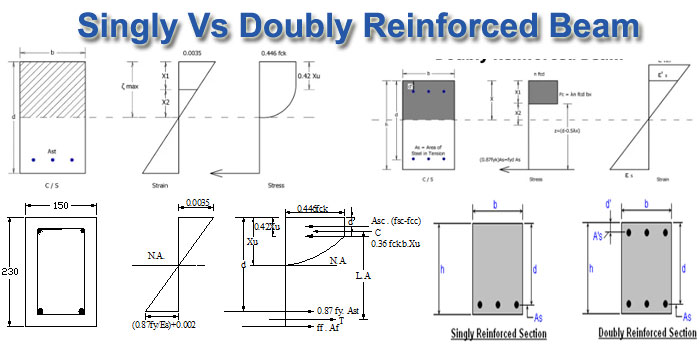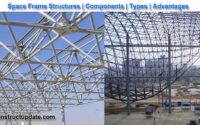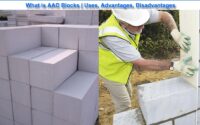Types of Beam | Singly and Doubly Reinforced Beam- Definition, Usage, and Differences
As we know, the structural components carrying vertical loads, preventing deflection are known as Beams. Identification of Beam takes place by their method of support, length, material profile, and condition of equilibrium.
Carrying vertical loads, beams transfer them to supporting column or masonry moving them to the foundation.
Beams based on support are of two types:
- Single Reinforced Beam:
Single Reinforced beam refers to the beam containing steel reinforcement only in tension zones.
In a single reinforced beam, the tension force is carried by the reinforcement while the compressive load is on the concrete that is caused by the beam’s deflection.
Reason for the usage of Single Reinforced Beam:
These beams are suitable when the moment of resistance of the balanced reinforced concrete beam of dimension b x d is Rbd2.
In the tensile zone of this beam, still is provided, which is suitable for both compression and tension.
It has limited moments of resistance.
DoubleReinforced Beam:
Double Reinforced beam refers to the beam in which steel bars are provided in zones of tension and compression.
It is suitable to use such beams in conditions where due to headroom limitations or architectural considerations, the size of the beam is limited.
Reason for the usage of Double Reinforced Beam:
- As it has steel in tension and compression zones, it reduces the section’s deflection, increasing the rotational capacity and flexibility.
- Compression steel also reduces long term deflection of beam.
- It is economical if compared to single reinforced beam.
- Needed when the face of member experiences an external load.
- Also practiced when the load is eccentric.
- Used whenchange is noticed in sign of the bending moment.
Differences between Single and Double Reinforced Beam
| S.No | SingleReinforced Beam | Double Reinforced Beam |
| 1. | A single reinforced beam holds a steel bar in the tension zone. | Steel bars are provided both in compression and tension zone in case of a double-reinforced beam. |
| 2. | In a single reinforced beam, concrete withstands the compression stress. | In a double reinforced beam, steel withstands the compression stress. |
| 3. | The steel acts as a false member provided to tie the stirrups with the bars. | Steel resists the stress from compression followed by adding a moment of resistance. |
| 4. | Used when the section has to resist Rbd2 moment. | Used when the section has to resist a moment greater than Rbd2. |





